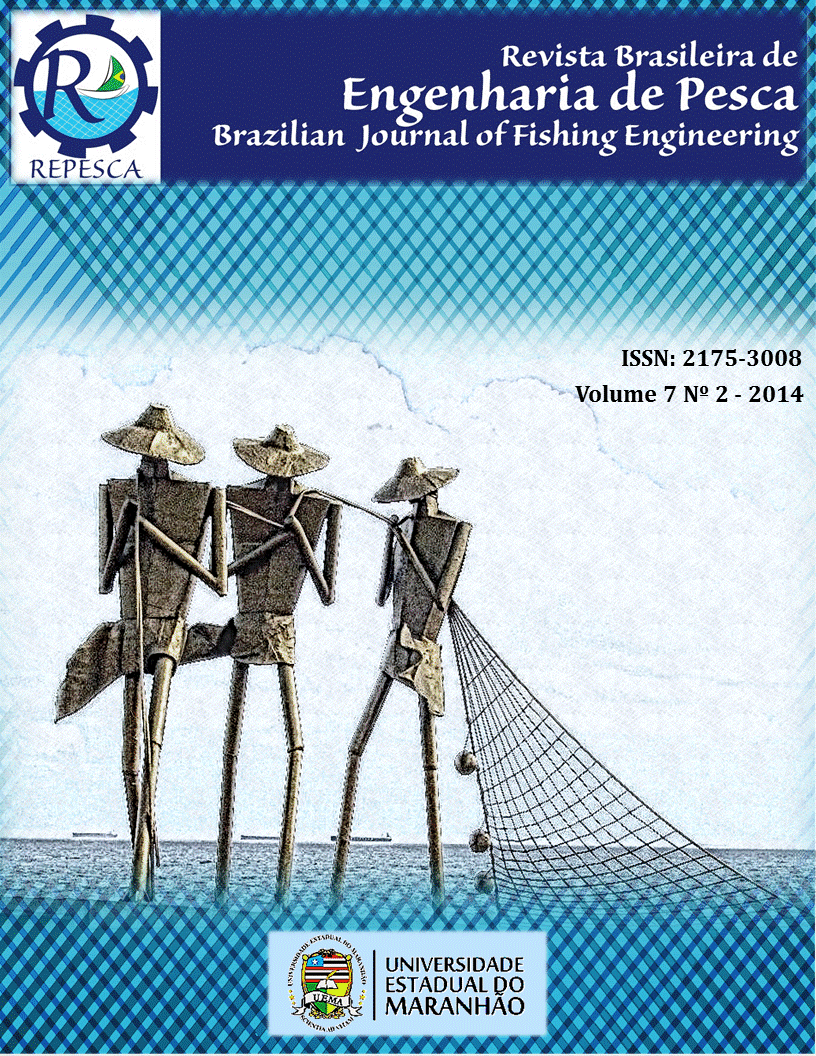OYSTER AND MACROALGAE DENSITY EFFECTS ON THE TREATMENT OF MARINE SHRIMP FARMING EFFLUENT
DOI:
https://doi.org/10.18817/repesca.v7i2.1069Palavras-chave:
Crassostrea rhizophorae, Gracilaria birdiae, Litopenaeus vannamei, Water quality, DensityResumo
The evaluation of oysters and macroalgae densities effects in effluent treatment of autotrophic and heterotrophic shrimp culture systems were assessed in laboratory-scale. Native species of oyster (Crassostrea rhizophorae) and macroalgae (Gracilaria birdiae) were selected due to their local availability and aquaculture potential in northeastern Brazil. Three densities of oyster (0.2, 0.4 and 0.8 oyster.L-1) and macroalgae (2.0, 4.0 and 8.0 g.L-1) were assessed during 48 h to treat effluent water (24 h for each phase). Chemical and physical variables were measured each 8 h during experimental period (0 to 48 h). Variations in the concentration of chlorophyll a, pheophytin, total phosphorus, total phosphate, orthophosphate, total ammonia, nitrate, nitrite, total suspended solids, organic suspended solids and inorganic suspended solids showed that the two biological filters reduced significantly the concentration of the different pollutants in the shrimp effluent, however oyster and macroalgae densities definition should be more evaluated.Downloads
Publicado
2016-05-24
Como Citar
GUIMARÃES, I. M., ANTONIO, Ícaro G., de SOUZA, A. B., LAVANDER, H. D., Mendes de OLIVEIRA, R. L. M. de O., CARDOSO JÚNIOR, L. de O., … OLIVERA, A. (2016). OYSTER AND MACROALGAE DENSITY EFFECTS ON THE TREATMENT OF MARINE SHRIMP FARMING EFFLUENT. Revista Brasileira De Engenharia De Pesca, 7(2), 54–66. https://doi.org/10.18817/repesca.v7i2.1069
Edição
Seção
Artigos









